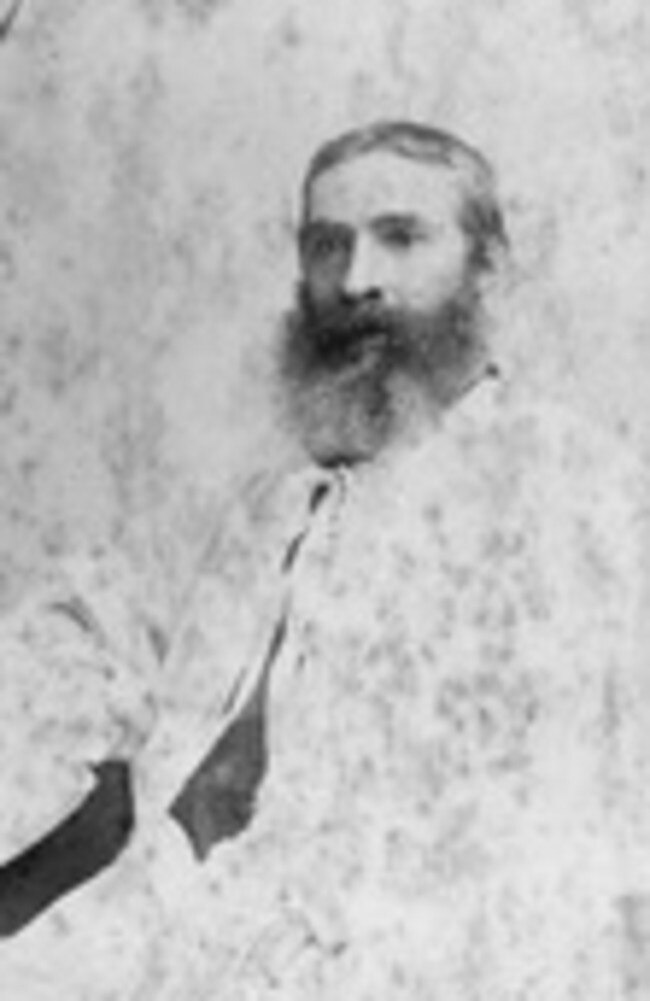Disease stalked halls of orphanage at Bucasia, near Mackay
It’s a picture postcard location. But the palm-lined beach and cane fields of Bucasia hide a dark secret – the remains of 19 children who died at St Joseph’s orphanage, writes Dot Whittington.

QLD News
Don't miss out on the headlines from QLD News. Followed categories will be added to My News.
Bucasia is a tropical haven near Mackay, but its palm-lined beach and cane fields hide a dark secret – somewhere within its borders are the remains of 19 children.
During the five years until its closure in 1885, the St Joseph’s orphanage was home to 126 children. A quarter of them – aged six months to 12 years – died, despite excellent care by the good Sisters of St Joseph and later the Sisters of Mercy.
The orphanage was founded on a beachside site 15km north of Mackay, part of 1200ha that the revered local priest Father Pierre Marie Bucas had purchased with his own funds in 1874.
The problem was that it had swamp on three sides and nobody knew that mosquitoes could spread malaria. They did think, though, that inhaling its vapours could be lethal.
The nuns, who slept in a house on stumps, were not getting sick because they were higher than the odours, but the children, whose bedding was on the ground, were sick and dying. Bucasia resident Doug Petersen, who has written the book Saint Joseph’s Orphanage Marara, the Children’s Story believes they were weakened by malaria, pneumonia, pleurisy and hookworm.

Doctors of the day came up with various causes. A 12-year-old died in 1882 from heart disease after being ill for six months, and a boy, 9, died from anaemia, dilation of the heart, and anasarca, a fluid-retention condition.
Many were feeble when they arrived and they weren’t all orphans.
If a man was killed by his horse, mum would take the children to the convent to look after them while she got sorted out.
If she couldn’t care for a sick child, she turned to the nuns for help, and if a child was found abandoned on the streets, the police magistrate sent them to the convent for care.
When a mother died, men working in the bush or on bullock wagons gave up their children until they remarried and had someone to care for them.
There were between 40 and 90 children in care at one time, coming from England, Ireland, Charters Towers, Clermont, or in one case, the West Indies, but all were taken under the wing of two nuns appointed by kindly Fr Bucas.
At 12, they entered service. A girl could help a lady around the house or a boy work on the cane farms. Their meagre wages were banked for them until they turned 21.
One family arrived from Ireland in December, the father died of heat stroke a month later, and his widow, unable to support four children, took them to the orphanage until she was settled.
Three boys, aged three to six, were admitted because they were destitute. Their father had died, and their mother admitted to Woogaroo asylum.
There was a happy ending as she returned seven months later to collect them.
The high mortality rate came to the attention of authorities, even though Inspector of Orphanages Charles Horrocks found there was no doubt it was extremely well managed.
Dr Arthur Cutfield wrote: “At my last visit four children were seriously ill and they were all in this extremely anaemic condition.
I found 14 others showing the same symptoms. It gives a proportion of one in every three who is in very delicate health.”
Mackay’s police magistrate Thomas Mowbray reported that in one month two inmates had died from dysentery, four others were seriously ill, and the medical officer did not anticipate the recovery of three of them.
Mowbray also considered that the care of children was excellent, but the deaths continued and in 1885, it was ordered that the orphanage be closed and the children transferred to the new Meteor Park orphanage at Rockhampton.
Ten died within six months of arrival. Another four had died at Mackay hospital and 19 were buried at an unknown site near the orphanage at what is now Bucasia Beach, named for Fr Bucas.
West of Bucasia, one of Mackay region’s favourite beaches, is Orphanage Swamp, while an 1886 handwritten map indicates what is believed to be the forgotten Orphanage Cemetery near the beach.
A memorial was erected to Fr Bucas on the esplanade in 1988 and three decades later, Mr Petersen was successful in his campaign to have a plaque listing the names and ages of the children who died placed beside it.
Locals contributed more than $12,000 to honour the children.
“We still haven’t found the cemetery, although it’s unlikely an orphanage would have money for headstones,” he says.
“It could be under someone’s house.”
For a copy of the book or to add to his research, email dougpetersen@bigpond.com


